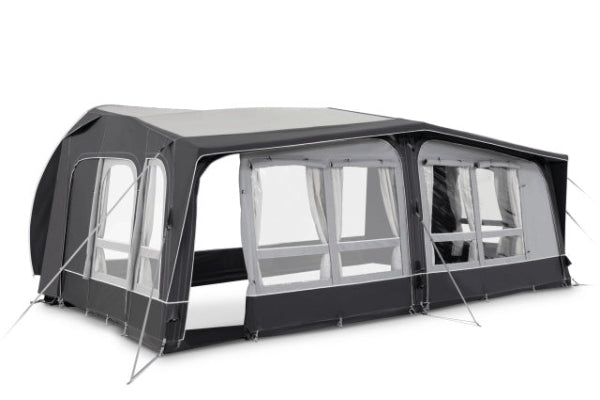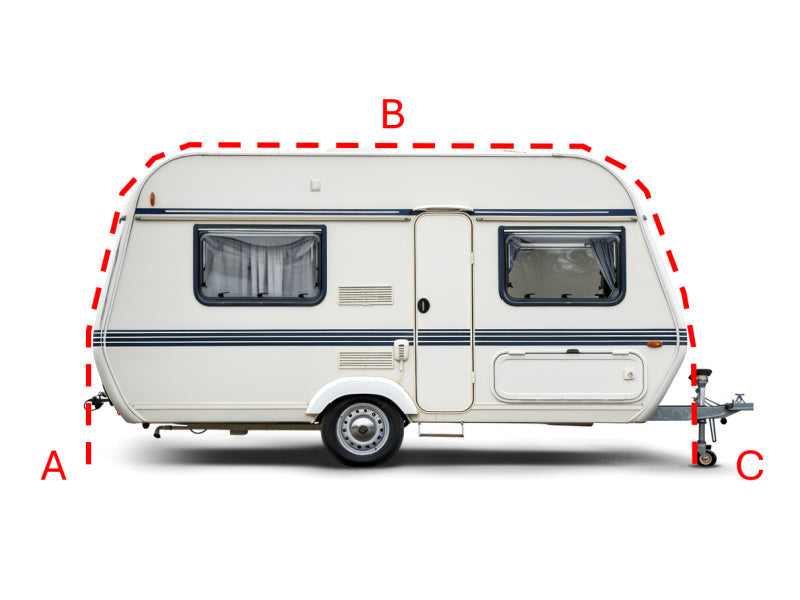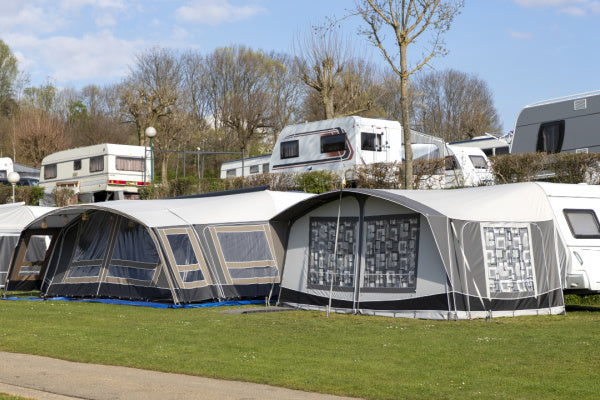How Do I Stop My Awning From Blowing Away?
Ever watched in horror as your caravan awning does its best impression of a hang glider? You're not alone! The quick fix: secure it properly with tie-downs, wind straps and robust anchoring. Read on to discover professional tips for keeping your awning firmly grounded, from essential hardware to storm-ready solutions.
Preventing Awning Blow-Away
Most caravan awning owners learn about wind thresholds the hard way. That heart-stopping moment when the fabric starts to ripple and strain against its moorings serves as a stark reminder - every awning has its limits.

Typical wind speed thresholds range between 20-30 mph, depending on the awning type. Metal awnings generally withstand up to 30 mph, while fabric versions handle around 20 mph. Retractable models fall somewhere in between at roughly 25 mph.
Understanding these limits isn't just about numbers - it's about protecting a valuable investment. Wind damage often starts subtly: small tears in fabric, slight bending of frames, loose fixtures. By the time these signs become obvious, the damage may already require costly repairs.
Regular inspection forms the backbone of wind damage prevention. Weekly checks during peak wind seasons can spot potential weaknesses before they become critical failures.
Strong Securing Techniques
Keeping an awning firmly in place demands more than just basic installation. Think of it as building a fortress - each additional security measure adds another layer of protection.
Professional installation provides the strongest foundation. Experts understand the subtle nuances of load distribution and stress points. They can identify potential weak spots that might go unnoticed by untrained eyes.
However, many effective DIY approaches can significantly boost an awning's wind resistance. The key lies in implementing multiple securing methods simultaneously, creating a comprehensive defence system against gusty weather.
Using Extra Pegs and Guy Lines
Extra pegging points act like anchors for a ship - the more you have, the more stable your awning becomes. Strategic placement matters more than quantity.
Heavy-duty pegs should be installed at 45-degree angles, creating maximum resistance against upward force. This angle provides optimal grip while distributing stress across the peg's length rather than concentrating it at a single point.
Critical pegging locations include:
-
Corner points where wind pressure often concentrates
-
Mid-points of longer sides to prevent billowing
-
Areas directly exposed to prevailing winds
-
Additional support points near entrances and windows

Tightening Guylines Properly
Proper guyline tension resembles tuning a guitar - too loose and it won't perform, too tight and something might snap. Even tension distribution across all lines prevents stress concentration that could lead to failure points.
Regular tension checks become especially important after:
-
Rainfall that can cause ropes to stretch
-
Temperature changes affecting material expansion
-
Strong wind events that might have shifted anchor points
-
Extended periods of use when natural settling occurs
Using Windbreaks
Strategic windbreak placement transforms the battle against wind from direct confrontation to clever deflection. Well-positioned windbreaks can dramatically reduce the effective wind force reaching an awning.
Consider windbreak placement based on:
-
Local prevailing wind patterns
-
Surrounding landscape features
-
Seasonal wind direction changes
-
Available anchor points for windbreak stability
Natural windbreaks like hedges or fences often provide more consistent protection than temporary solutions. However, portable windbreaks offer flexibility for changing conditions.
Reducing Awning Area
Sometimes, the best defence involves making yourself a smaller target. Reducing an awning's wind-catching surface area can significantly decrease wind loads during gusty conditions.
Practical reduction methods include:
-
Partially retracting retractable awnings during moderate winds
-
Removing detachable side panels when strong winds threaten
-
Installing storm straps for additional support during partial retraction
-
Using temporary support poles to modify awning angle

Choosing the Right Pegs for Ground Conditions
Peg selection might seem straightforward, but ground conditions can make or break an awning's stability. Different surfaces demand specific solutions for optimal holding power.
Soft or sandy ground requires broad, screw-type pegs or specialised sand anchors. These distribute load across a wider area, preventing the peg from working loose under strain.
Rocky ground demands robust steel rock pegs capable of handling impact during installation. These pegs might be shorter but compensate with increased thickness and hardened tips.
Normal soil conditions suit standard heavy-duty steel pegs, but length selection remains crucial. As a rule of thumb, peg length should match expected wind conditions - longer pegs for stronger winds.
Concrete or paved areas present unique challenges requiring creative solutions:
-
Weighted anchor points
-
Specialised concrete anchors
-
Storm straps connected to fixed points
-
Custom mounting brackets
Remember that mixing peg types often provides better overall stability than using a single type exclusively. This approach allows for adaptation to varying ground conditions often found at a single site.
The key to success lies in regular maintenance of these securing systems. Even the best equipment requires periodic checks and adjustments to maintain its effectiveness.
By implementing these comprehensive securing techniques and choosing appropriate hardware for specific conditions, awning owners can create a robust defence against wind damage. This systematic approach transforms a vulnerable installation into a resilient outdoor feature capable of handling challenging weather conditions while maintaining its functionality and appearance.
Other content you might like:
- How to extend a caravan awning
- Should caravan awning legs be up or down?
- Can you put a caravan awning up in the rain?
- Do mud flaps go in or out of awning?
- How to stop my caravan awning from sagging?
- Can caravan awnings cause problems?
- Can caravan awnings cause damp problems?
- Can caravan awnings affect windows?
- Can caravan awnings affect the environment?
- Can caravan awnings be recycled?





Leave a comment